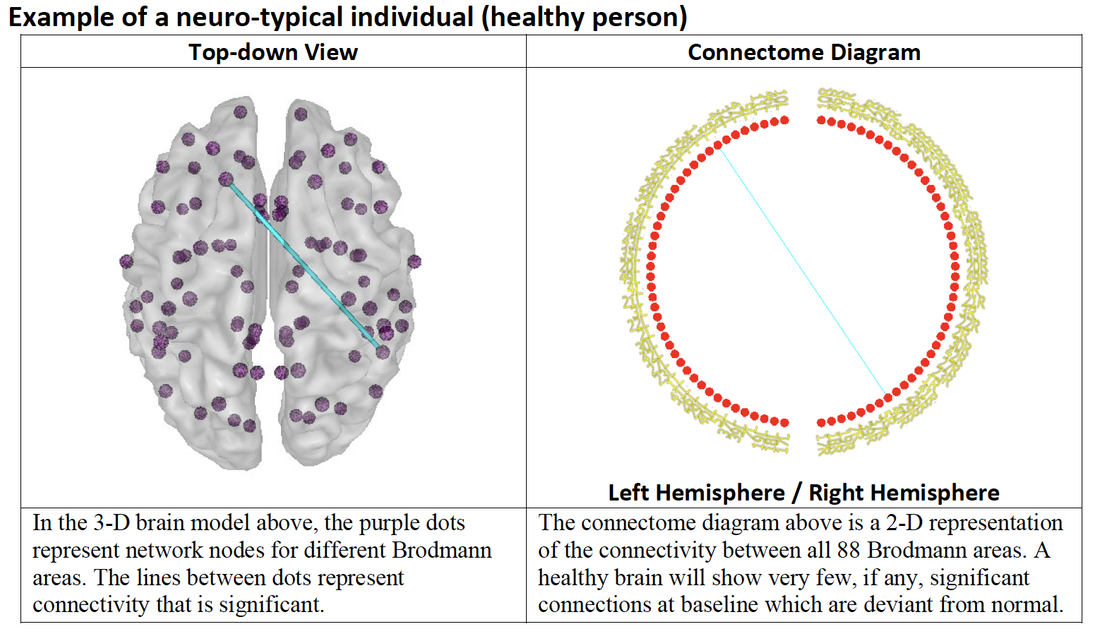Repeated Directed Pulsed Radiofrequency Attacks aka NKBI (Non-Kinetic Brain Injury) result in progressive brain degradation characterized by slowing down of the speed of the distribution of brain own's electromagnetic signals between brain's nodes and regions. Typical healthy frequency of signal distribution in the awaken state are BETA (13-30Hz) and ALPHA (8-12 Hz). DELTA distribution speed frequency (slower than 4 Hz) are normally detected during deep sleep, or in the state of hypnosis. A large number of DELTA Connections in the awaken state is associated with severe brain degradation.
Below is a qEEG neuroimaging sample obtained from a Targeted Individual who is also a victim of ongoing NKBI, showing the presence of abnormally high number of slow DELTA connections in the Global Brain Connectivity View in the awaken state (individual networks connectivity maps are not shown):
Here is an example of a qEEG Conclusion you might receive from a specialist conducting qEEG in a Targeted Individual (qEEG results of Len Ber MD). Individual results may vary.
2022.04.01_qeeg_conclusion.pdf
The International Society for Neurofeedback and Research (ISNR) has a provider list with contact information for finding out what type of imaging software they use in their practice. Remember, you are looking for a provider who utilizes swLoreta, the most advanced and informative commercial imaging software to date, that is used in conjunction with qEEG.
2022.04.01_qeeg_conclusion.pdf
The International Society for Neurofeedback and Research (ISNR) has a provider list with contact information for finding out what type of imaging software they use in their practice. Remember, you are looking for a provider who utilizes swLoreta, the most advanced and informative commercial imaging software to date, that is used in conjunction with qEEG.
Targeted Individuals
individuos apuntados
Individuo dirigido
Personne ciblée
Individu ciblé
فرد مستهدف
目标个人
目標個人
लक्षित व्यक्ति
Individu yang Disasarkan
Целевая личность
লক্ষ্যযুক্ত ব্যক্তি
Indivíduo segmentado
対象者
Zielgruppe
Diangkah Individu
대상 개인
Hedeflenen Birey
Cá nhân được nhắm mục tiêu
లక్ష్యంగా ఉన్న వ్యక్తి
लक्ष्यित वैयक्तिक
இலக்கு தனிநபர்
Individuo mirato
نشانہ انفرادی۔
લક્ષ્યાંકિત વ્યક્તિગત
Ukierunkowana osoba
Цільова особа
فردی هدفمند
ടാർഗെറ്റുചെയ്ത വ്യക്തിഗത
ಉದ್ದೇಶಿತ ವೈಯಕ್ತಿಕ
ਨਿਸ਼ਾਨਾ ਵਿਅਕਤੀਗਤ
ඉලක්කගත තනි පුද්ගලයෙකි
Individual vizat
Məqsədli Fərdi

